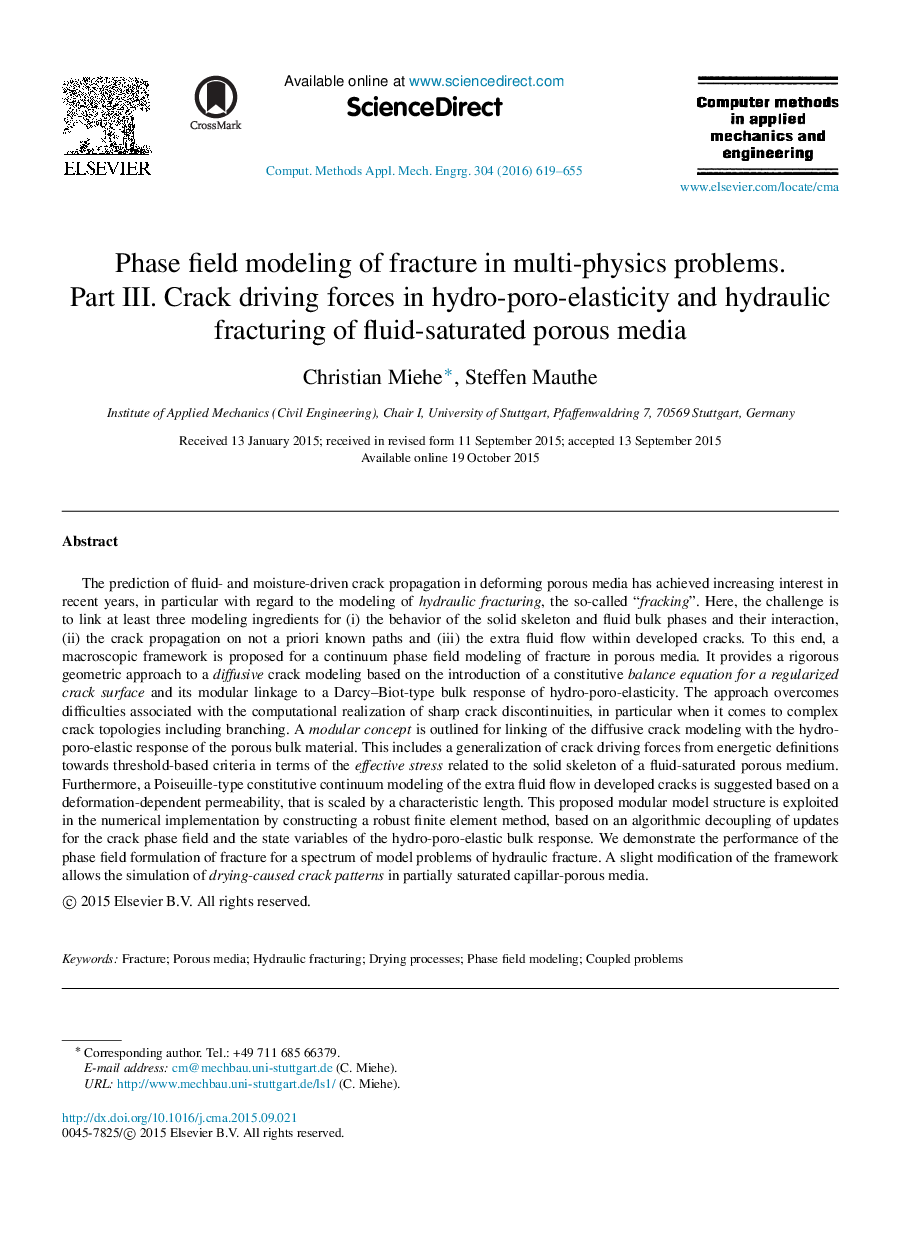| کد مقاله | کد نشریه | سال انتشار | مقاله انگلیسی | نسخه تمام متن |
|---|---|---|---|---|
| 497681 | 862937 | 2016 | 37 صفحه PDF | دانلود رایگان |
The prediction of fluid- and moisture-driven crack propagation in deforming porous media has achieved increasing interest in recent years, in particular with regard to the modeling of hydraulic fracturing, the so-called “fracking”. Here, the challenge is to link at least three modeling ingredients for (i) the behavior of the solid skeleton and fluid bulk phases and their interaction, (ii) the crack propagation on not a priori known paths and (iii) the extra fluid flow within developed cracks. To this end, a macroscopic framework is proposed for a continuum phase field modeling of fracture in porous media. It provides a rigorous geometric approach to a diffusive crack modeling based on the introduction of a constitutive balance equation for a regularized crack surface and its modular linkage to a Darcy–Biot-type bulk response of hydro-poro-elasticity. The approach overcomes difficulties associated with the computational realization of sharp crack discontinuities, in particular when it comes to complex crack topologies including branching. A modular concept is outlined for linking of the diffusive crack modeling with the hydro-poro-elastic response of the porous bulk material. This includes a generalization of crack driving forces from energetic definitions towards threshold-based criteria in terms of the effective stress related to the solid skeleton of a fluid-saturated porous medium. Furthermore, a Poiseuille-type constitutive continuum modeling of the extra fluid flow in developed cracks is suggested based on a deformation-dependent permeability, that is scaled by a characteristic length. This proposed modular model structure is exploited in the numerical implementation by constructing a robust finite element method, based on an algorithmic decoupling of updates for the crack phase field and the state variables of the hydro-poro-elastic bulk response. We demonstrate the performance of the phase field formulation of fracture for a spectrum of model problems of hydraulic fracture. A slight modification of the framework allows the simulation of drying-caused crack patterns in partially saturated capillar-porous media.
Journal: Computer Methods in Applied Mechanics and Engineering - Volume 304, 1 June 2016, Pages 619–655
